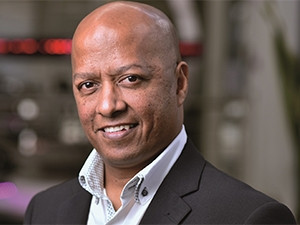
ITWeb Data Centre Summit 2017
If you are a qualified end user in this market, your attendance is FREE. Register at annual ITWeb Data Centre Summit now, as seats are limited. AJ Hartenberg, plus many others, will present at this forum on 25 July. Watch this space for the updated agenda.
In his new role of strategic thinker and planner, visionary, vision explorer and creator, digital strategist and transformational explorer, we spoke to AJ Hartenberg about why he believes organisations should invest in a data centre, or not, and more importantly what is the value of a data centre for an organisation. Hartenberg, who owns Yada Consulting Group Services, will be presenting at the upcoming ITWeb Data Centre Summit 2017, Focus Rooms, Sunninghill, on 25 July. He provides a thought-provoking look at the investment decisions that organisations need to consider when planning the way forward for their data centre. In the same breath he delves into the role of OEMs and ISVs.
ITWeb Events: What are the main investment decisions an organisation needs to make before deciding on the way forward for their data centre?
Hartenberg: The first decisions and organisations needs to make is: what technology, both from an infrastructure and software perspective, do they want to invest in? However, before you make any decision about where to invest, the organisation needs to know what the overall business strategy is and the role technology play in the strategy.
The key elements are customer experience, new business models and what elements of content delivery networks, containers and dockers, IOT, fog/edge computing, cloud computing and monetising new products and services.
ITWeb Events: What are the main investment decisions an organisation needs to make before purchasing infrastructure for their data centre?
Hartenberg: OEMs and ISVs are having to look at new ways of enabling services that organisations are developing through DevOps and behaviour-driven design methodologies. Planning your infrastructure decisions based on the customer experience, business strategy and digital transformation journeys are what take precedence over keeping the lights on. Validating the solutions continuously being offered by OEMs and ISVs is a key element of purchasing decisions.
ITWeb Events: What are the benefits of strong OEM infrastructure partnerships?
Hartenberg: When partnering with OEMs and ISVs, the ability to partner enables organisations to make strategic business decisions. An element of this is understanding the future roadmaps of the various OEMs and ISVs. This gives the organisation insight into its own products and services as well as the customer experience in the market place. Being intentional based on the technology helps the OEM to understand where you are taking your organisation.
ITWeb Events: Why is the difference between cloud and SAAS?
Hartenberg: According to NIST's definition, cloud computing is overarching umbrella of IAAS, PAAS and SAAS. However, in addition to this, processing is now being pushed to the edge and devices on the edge are required to handle processing of data to improve the customer experience. Furthermore, with the increased uptake of CDN (content delivery networks) this speaks directly into an IOT operational model and the ability to process at the edge.
ITWeb Events: Can an organisation truly achieve complete infrastructure scalability?
Hartenberg: An organisation can only achieve complete infrastructure scalability when the business embraces transformational leadership which enables new business models. The transformational leadership journey includes the understanding of where digital transformation meets the business and serves to increase customer experience and longevity.
Infrastructure scalability requires evaluation of various technologies available on the market and business models that enable the use of the various solutions and models. In addition, there are many challengers in the infrastructure arena, but with infrastructure scalability comes the integration of software and what infrastructure of the future will look like.
Infrastructure is in a conundrum as the speed of processors are not the focus, but what can be done with the software integrated with the infrastructure. Scalability of infrastructure needs to reconsider that infrastructure includes software and what software enables the infrastructure to do. Each area of the organisation has a different requirement and as the digital transformation and the continued embracing of sensors continues so scalability will include cloud computing, fog computing and IOT. The drive to have access to more content requires one to include the architecture of CDN as part of the solution.
ITWeb Events: Why are you participating in the Data Centre Summit and what is the key takeaway that you hope delegates take with them from your presentation?
Due to the continuously changing technological environment, technology professionals need to be armed with the information and the tools to enable them to be instruments of change in their respective organisations.
The adage of 'doing more with less' rings true. The less, though, is not with current technology but looking at technology that focuses on less and using tools from local DevOps and then starting developing those models.
As a country, we have been innovative before, we need to be innovative now. We need to look to the future of data centre scalability and what the extension of data centre means.
My hope is that delegates would take away that the extension of the data centre includes not only current and future infrastructure, but a change in technology with new competitors, both being elements they should consider in their architecture. Just as Uber used a different model of being a taxi business and Airbnb changed the face of finding a hotel or bed and breakfast location, we need to be looking at how we develop new and innovative ways of using data centre technology.
Share